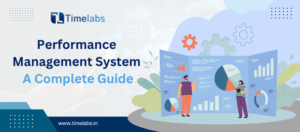On International Women’s Day, we honor the achievements and advancements of female employees. There has been a lot of development over the last several years in initiatives throughout the world to support women in a variety of fields. For example, gender inequalities among out-of-school children have decreased, resulting in an increase in the number of female students. Although literacy rates throughout the world have risen, more has to be done. A goal to amend discriminatory legislation in six areas by 2023 is to make progress toward gender equality.
The COVID-19 epidemic, however, has slowed advances in improving female involvement in the workplace. To get back on track after this setback, efforts toward gender equality must pick up the pace.
What Has Been The Impact Of COVID-19 On Women Around The World?The epidemic has a disproportionate impact on industries that employ a large number of women. 40% of all professional women work in industries severely impacted by lockdowns, most frequently in service sectors requiring extensive interaction. The economic consequences have not only disturbed sectors with a higher proportion of female employment but have also aggravated already existing inequities associated with unpaid care and household tasks carried out by women.
It’s possible that progress toward gender equality may be reversed and economic development will be slowed if these issues aren’t addressed; otherwise, more women may decide to leave or minimize their involvement in the workplace.
Close the Gap in InclusionAll employees appear to care about building an inclusive work environment. According to a study issued by Accenture, 77% of female employees and 67% of male employees believe that an inclusive workplace is vital to corporate success. 68% of the male and female business leaders surveyed said they were in agreement.
However, the research revealed a disconnect between how leaders and employees saw their organization’s objectives toward equality: although 68% of executives believed they were fostering empowering and inclusive environments, just 36% of people agreed.
Aim for Purposeful TasksTo what extent may managers establish a relationship with the female members of their workforce? There are a plethora of creative methods for employers to honor and encourage women, which will have a positive impact on the whole workforce. As an example, a corporation can convey the stories of female trailblazers who have worked there. Employers may also choose to fund a volunteer initiative that helps local women and girls.
Women’s Day can be celebrated in the workplace in a variety of ways:- With a few internal spotlight messages, you may show your appreciation for the contributions of female leaders at work.
- Women’s challenges and advancements in the workplace might be discussed by inviting speakers to speak at regular meetings.
- Establishing an affinity group for female empowerment within the company.
- Having a top leader write a note expressing their commitment to women’s growth in the workplace.
Employers may choose to host activities for both men and women throughout the year in addition to the annual celebration of International Women’s Day. Having a good time outside of the office might help you come up with new ideas.
Make a Commitment to Barrier EliminationDiscrimination against female employees has a severe influence on their daily work experiences, making it more difficult for them to get recruited and promoted. We may choose to question preconceptions, battle bias, widen perspectives, improve conditions, and applaud women’s accomplishments.
Women in the workplace face a number of challenges, including:- Inequitable distribution of pay.
- Issues about sexual assault.
- Identifying and retaining mentors.
- Progression from middle management to the executive suite.
- Flexible work schedules and parental leave.
Making sure that female employees have efficient and authentic professional advancement opportunities inside the organization is an important approach for companies to attract and retain female talent.


